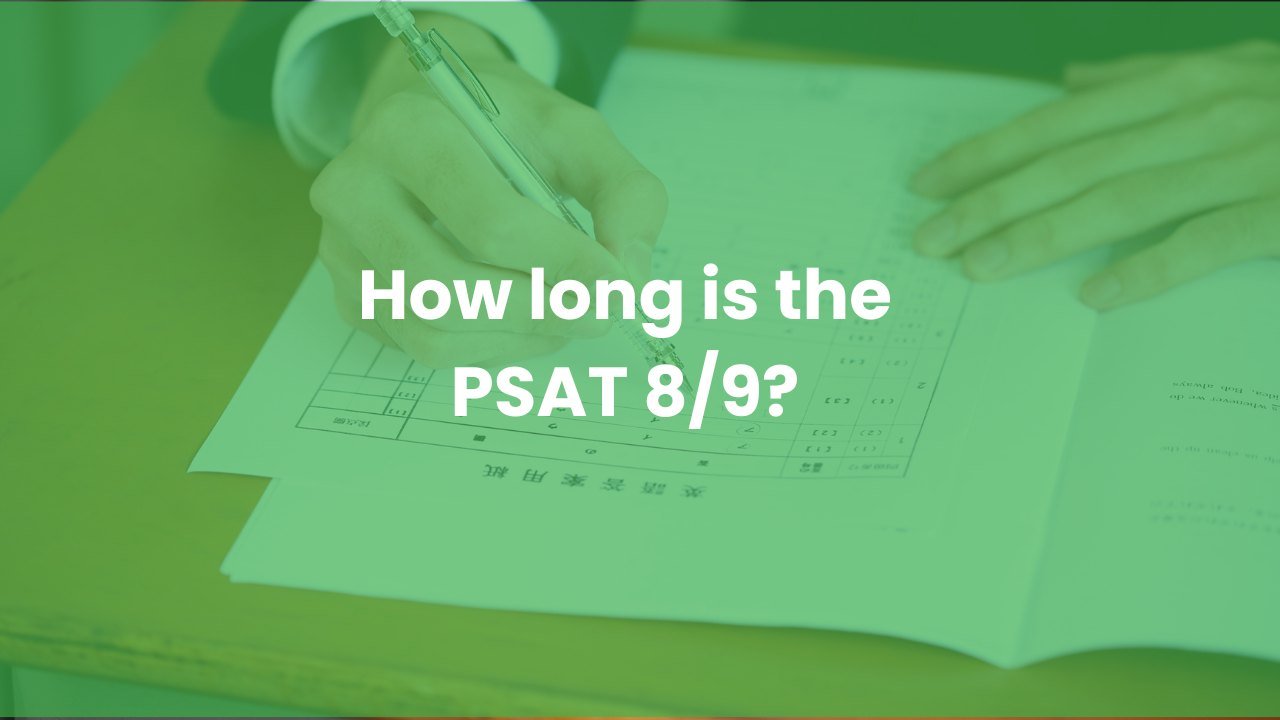The PSAT (Preliminary SAT) is generally a practice test taken before the real SAT exam, and it is used to qualify for the National Merit Scholarship Corporation. Knowing what the PSAT is can help you prepare better for the PSAT so you not only score higher but also qualify for a scholarship program.
What Is The PSAT (Preliminary SAT)
The PSAT (Preliminary SAT) is a standardised exam, but it doesn’t have as much weight as the actual SAT. It shows how students perform in core skills by giving them practice questions under real test conditions. Students often call it the PSAT/NMSQT. This highlights its dual purpose: practice for the SAT and a qualifying exam for scholarships. Teachers and counsellors often view the PSAT as a measure to assess students’ academic readiness.
When Do You Take the PSAT?
The PSAT is held every October. Students in 10th and 11th grade can take this exam. Some schools also offer a version in 9th grade known as PSAT 8/9. It is designed to assess early academic readiness.
- 10th graders often use it as practice.
- 11th graders take it for both practice and eligibility in the National Merit Scholarship Program.
- 9th graders may take the PSAT 8/9 to get a first measure of skills.
The following schedule breaks down what the College Board has designated for 2025, a full fall testing window plus two Saturdays for added flexibility
| Test Type | Date(s) |
| PSAT/NMSQT | October 1–31, 2025 (schools choose within window) |
| Saturday Option | Saturday, October 11, 2025 |
| Alternate Saturday | Saturday, October 18, 2025 |
PSAT is directly associated with the school students, so students usually register through their high school. They don’t use the College Board to register. Educators and college counsellors coordinate test dates and logistics.
What Is the PSAT Structure?
In the fall of 2023, PSAT changed its traditional pen-and-paper style and embraced a digital format. It has an adaptive format that is similar to the new Digital SAT. The adaptable format means the difficulty of the next section will depend on the performance in the first section.
| PSAT section | Content | Number of Questions | Time |
| Reading and Writing | Reading comprehension, grammar, and editing | ~54 | 64 min |
| Math | Algebra, problem solving, geometry, data | ~44 | 70 min |
| Total | ~98 | ~2 hrs 14 min |
The key features of the latest PSAT format are:
- The test is now shorter in length than the old version.
- Students use a digital platform that includes tools like a calculator and highlighting.
- The adaptive design gives a first module of mixed difficulty, then adjusts the second module to fit student performance.
The latest testing structure shows how standardised testing is evolving. It is becoming shorter and more skill-focused. Now, students will not only have to focus on content, but also on getting comfortable with digital testing environments, too.
Your success story begins with us!
We are here for you! Schedule a call with our consultant for personalized advice on achieving your learning goals

How Many Times Can You Take the PSAT?
Students can only take the PSAT once a year. It is tied to school schedules, so no multiple testing is possible, like the ACT or SAT. Most high school students will take it two or three times:
- Once in 10th grade.
- Once in 11th grade.
- Optionally in 9th grade (PSAT 8/9).
The 11th-grade test is important for scholarship eligibility. Students who score in the top percentile may qualify as National Merit semifinalists or finalists. Teachers often suggest to students not to worry about earlier scores. This is for early practice runs that prepare them for this essential junior year exam.
How Long Is the PSAT?
The duration of the digital PSAT is 2 hours and 14 minutes. This includes:
| PSAT Section | Length | Number of Questions | Time per Question |
| Reading | 60 minutes | 47 questions | 77 seconds |
| Writing and Language | 35 minutes | 44 questions | 48 seconds |
| Math — No Calculator | 25 minutes | 17 questions | 88 seconds |
| Math — Calculator | 45 minutes | 31 questions | 87 seconds |
| Total | 2 hrs 45 min | 139 questions | N/A |
The digital SAT is shorter and more focused compared to the old paper-based version. On the other hand, the SAT takes around 2 hours and 24 minutes. For students, the shorter length means less fatigue. For teachers, it makes scheduling easier during the school day. Still, it requires careful pacing. Students must balance accuracy with speed to finish on time.
Common FAQs About the PSAT
Here we answer the most common questions about the PSAT.
Does the PSAT count for college admission?
No. Colleges do not see PSAT scores. The main purpose is practice and scholarship qualification.
What is a good PSAT score?
The test score ranges from 320 to 1520. A good score depends on goals, but for National Merit consideration, students often need to score in the top 1–2% of their state.
How is the PSAT scored?
Each section is scored between 160 and 760. The two sections combine for the total. Subscores and cross-test scores give extra insight into strengths and weaknesses.
How do teachers use PSAT results?
Teachers analyse score reports to identify skill gaps, guide lesson plans, and prepare students for the SAT. Many schools now use PSAT data to plan targeted interventions in math and literacy.
How do students prepare for the PSAT?
Preparation can include reviewing math and grammar fundamentals, practising reading comprehension, and taking sample digital PSAT tests.
How does the PSAT relate to the SAT?
The PSAT mimics the SAT in structure and content, but is shorter and slightly easier. Scores can be used to predict SAT performance.
Bottom Line
The PSAT is more than just a PSAT practice test. It is a first step toward the SAT, and for some students, it is their chance to qualify for a scholarship. It helps educators and parents see the growth of students, not just their scores. Ivy Learning supports this journey with resources tailored to the digital PSAT, guiding both practice and long-term preparation. It provides structured support that aligns with the digital adaptive format.









